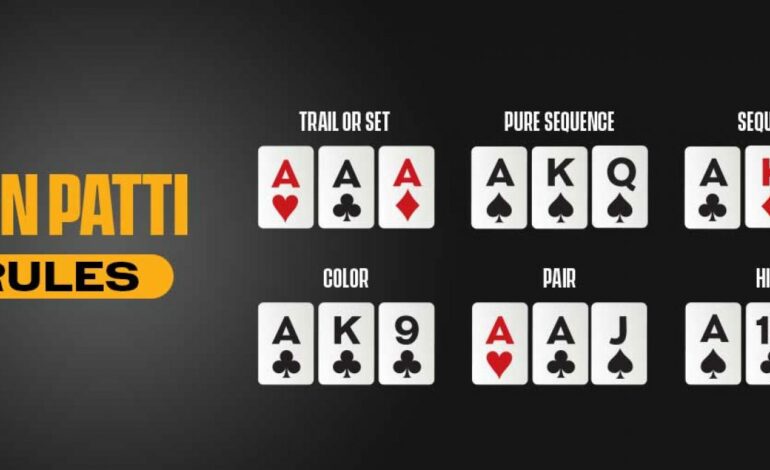
Understanding the Structure of Poker Sequences
Poker, a worldwide popular card game, is a strategic effort that requires a thorough grasp of probability, psychology, and game theory. Poker sequences, strategic moves, and decisions made by players over the numerous betting rounds are fundamental to the game. This article delves into the complicated structure of Poker Sequence, highlighting the main elements that form the game’s flow.
What is a Poker game?
Poker is a popular card game that mixes strategy, skill, and luck. The Poker games, played in many variations worldwide, primarily include participants wagering depending on the perceived strength of their hands. The main goal is to win chips or money by holding the better hand at the showdown or convincing opponents to fold. Individual player hands, communal cards, and intelligent decision-making across betting rounds are all critical factors. Poker varieties such as Texas Hold’em and Omaha dictate the rules and structure. In addition to its competitive character, Poker frequently incorporates psychological elements, such as bluffing and reading opponents, which add complexity to the game.
1. Anatomy of Poker Sequences:
Preflop Behavior:
Discuss the significance of starting hands and how they affect the game’s course.
During the pre-flop phase, introduce the notion of position and its implications on decision-making.
The Flop:
Investigate how the community cards on the flop change the game’s dynamics.
Discuss the significance of board texture and how it affects betting strategy.
The Turn:
Examine how the inclusion of the turn card changes the growing story of the poker game.
Discuss pot odds and how they affect decision-making at this level.
The River:
Examine the last community card and its function in determining the hand’s outcome.
Discuss the relevance of showdowns and the psychology of the previous betting round.
2. Strategic Considerations in Poker Sequences:
Deception & Bluffing:
Investigate the art of bluffing and its impact on the predictability of poker sequences.
Discuss the need to balance bluffs and value bets to keep opponents guessing.
Pot Sizing and Control:
Analyze tactics for influencing opponents’ decisions and managing the amount of the pot.
Discuss proper bet sizing dependent on the stage of the poker sequence to extract value or cause folds.
Changing to Meet Opponents:
Emphasize the significance of reading opponents and adapting methods accordingly.
Discuss player profile and how it influences decisions in poker sequences.
Positional Sensitivity:
Emphasize the continual importance of position throughout the game’s many stages.
Discuss how betting methods and overall decision-making are influenced by work.
3. Common Mistakes and Learning Opportunities:
Hands Over commitment:
Discuss the typical mistake of being too connected to a hand and the repercussions of overcommitting.
Advise on identifying when to fold and cut losses.
Inability to Adapt:
Investigate certain players’ tendency to persist to fixed strategy even as the dynamics of the poker sequence shift.
In reaction to the changing gaming environment, emphasize the need for adaptation.
Ignoring Table Dynamics:
Discuss the necessity of paying attention to general table dynamics, such as player habits and mood.
Through keen observation, identify possibilities for exploiting opponents’ vulnerabilities.
4. Creating Momentum:
The Flop Dynamics:
Examine how the first three community cards on the flop affect the game dynamics.
Discuss board texture and its relevance in forming betting tactics.
The Turn Card and Its Importance:
Consider adding the fourth community card (the turn) and the ramifications for players.
Discuss how the turn affects betting decisions and changes possible hand strengths.
Conclusion:
To summarize, comprehending the complexities of poker sequences necessitates a multidimensional approach that combines a firm comprehension of the game’s mathematical components with an acute awareness of psychological dynamics. A competent poker player must continually adapt and apply a complex strategy to outmaneuver opponents, whether navigating preflop decisions, judging the shifting board on the flop, or making important decisions on the river. As players peel back the layers of poker sequences, they discover a complex tapestry of strategy, psychology, and skill that characterizes the core of this enthralling card game.







